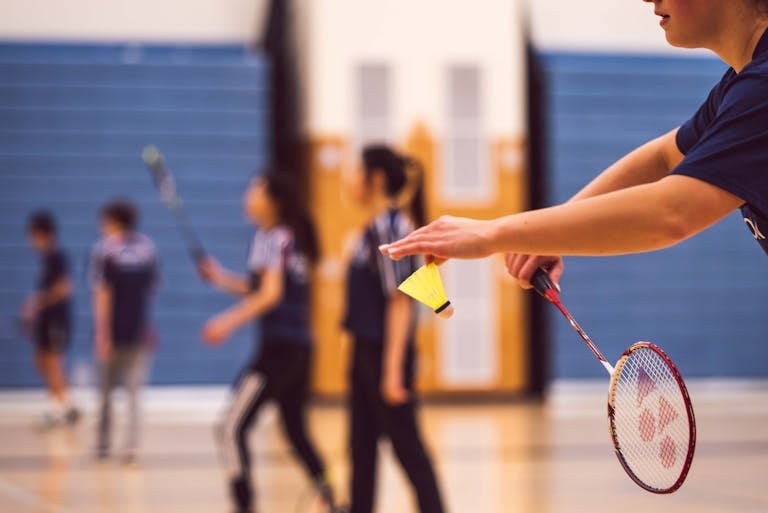Main pro golf tour for women LPGA Tour, famous worldwide for premier events and talented players. It began in 1950 and today conducts tournaments across numerous nations.
LPGA Tour players are some of the top in the world. Prize money, robust fields and global reach characterize its tournaments.
To provide a transparent glimpse into the tour’s inner-workings, below, the remainder of this post highlights some of its most important facts and trends.
The Association
The LPGA, a significant milestone in women’s sports organizations, is one of the oldest and most respected, influencing the worldwide women’s golf culture and inspiring pioneering women golfers around the world.

Founding
The LPGA started in 1950, constructed by 13 women who sought to build genuine opportunities for women golfers to turn pro. It was an audacious move, since there were almost no avenues for women to play competitively. With names like Babe Zaharias and Patty Berg leading the charge, they laid a strong foundation for the group.
They battled issues such as meager prize money and limited access to courses, but managed to keep the tour alive. Over time, the LPGA experienced huge transformations with more tournaments, bigger crowds, and increasing prize money hitting $70.5 million in 2019.
Mission
The LPGA’s primary objective is to provide women with an equal opportunity to succeed at all levels of golf. It strives to keep the game accessible to anyone and not just someone who has the means or the contacts. By embracing diversity, the LPGA has transformed women’s golf.
The LPGA supports young female golfers through various initiatives:
- Scholarships and youth programs: The LPGA backs young female golfers with scholarships and learning chances, including the LPGA-USGA Girls Golf program, which has helped over 300,000 girls.
- Coaching and mentorship: Female pros and coaches lead training camps, helping young players build skills and confidence.
- Community outreach: The association runs clinics and open days to draw more girls and women into the sport.
They’ve ignited genuine growth, with more girls and women joining local clubs and competing on the world stage every year.
Global Role
The LPGA’s influence spans all continents, with a tour that features competitors from over 27 nations. In 2024, 33 tournaments were scheduled, and 11 were abroad. The LPGA collaborates with other golf organizations to organize co-sanctioned events, enhancing women’s golf in regions such as Asia and Europe.
The Korean invasion, spearheaded by Se Ri Pak, demonstrates how the LPGA breeds new stars around the globe. The group ensures that players of all backgrounds, such as transgender women, have a route to play.
Key Figures
So too have been countless women who have propelled the LPGA to new heights. Babe Zaharias and Patty Berg got it off to a great start. Se Ri Pak’s 1990s wins paved the way for Korean golfers.
Annika Sörenstam set a new standard for practice and talent. Each leader has contributed to the LPGA’s growth, from establishing the early tour to turning it into a global powerhouse.
Tour Structure
The LPGA Tour, a significant milestone in women’s professional golf, features an international calendar and a complex organization, with its format and player development avenues defining a competitive season for LPGA professionals.
Tournament Tiers
LPGA events are classified in a few tiers. The regular events make up the bones of the schedule, attracting players from across the globe and providing points and prize money opportunities.
Majors sit at the top, acknowledged for their tradition and bigger purses. Other levels feature limited-field invitationals and team competitions, each bearing its own significance for rankings and player recognition.
Tournaments like the Walmart NW Arkansas Championship help younger players carve out careers, while majors like the ANA Inspiration and U.S. Women’s Open can cement a player’s legacy. Tiers affect more than just income—whether you’re making thousands or millions of dollars—but impact world rankings and sponsorships.
The Majors
The LPGA majors are the Chevron Championship, KPMG Women’s PGA Championship, U.S. Women’s Open, AIG Women’s Open and Amundi Evian Championship. These are events rich with tough fields, tough course conditions and deep traditions.
Winning a major brings a player global attention and can help shape a career. For instance, champions Annika Sörenstam and Inbee Park leveraged major victories into Hall of Fame careers.
The U.S. Women’s Open is renowned for its intensity and massive purse, and the Evian Championship is noted for its beautiful location and international exposure.
Path to the Tour
- Compete in amateur tournaments and national championships
- Play college golf or join junior circuits
- Enter and succeed in qualifying tournaments (Q-Series)
- Progress through developmental tours (Symetra/Epson Tour)
- Earn LPGA Tour card via performance or qualifying school
Qualifying events and development tours remain important for those aiming to take their LPGA spot. These steps test ability under pressure and provide vital experience.
College golf and amateur play get players ready for the rigors of the pro circuit. Many stars, like Nelly Korda, transitioned seamlessly from standout amateur careers to the top of the LPGA rankings, demonstrating the importance of robust developmental pathways.
Season Finale
The Tour Championship wraps up the LPGA season and honors the year’s best of the best. It determines the Race to the CME Globe winner, who receives the biggest single-event prize in women’s golf.
It’s a charged environment, with rankings and season-long awards depending on a one week’s worth of games. Seasons before that brought memorable conclusions, be it an epic playoff victory or a round for the record books, establishing the Tour Championship as a bona fide examination of nerve and skill.
Key Players
The LPGA Tour’s influence extends beyond the fairways, as pioneering women golfers, both past and present, have shaped the competitive landscape and the global impression of women golfers.
1. The Icons
Icons such as Nancy Lopez, Annika Sörenstam and Patty Berg established the initial standard of excellence on the LPGA Tour. Nancy Lopez, for example, shocked the world in 1978 by taking home Player of the Year, Vare Trophy and Rookie of the Year honors all in one season—a feat that has yet to be duplicated.
Annika Sörenstam’s 90-plus worldwide wins and record-breaking scoring average established new standards for consistency. Among the pioneers, Patty Berg continues to shine with her 15 majors, a women’s golf record that has withstood the passage of decades.
These legends did more than dominate championships. They cultivated a culture of mentorship and advocacy for women on the course, with some, like Jane Blalock, generating new opportunities – like the Legends Tour for senior women pros. Even in retirement, them evangelizing the game — from media appearances to junior clinics — keeps inspiring new generations.
2. Current Stars
Today’s LPGA is characterized by the likes of Jin Young Ko, Lydia Ko and Nelly Korda. Each brings a unique style: Jin Young Ko is known for her calm, methodical play and accurate ball striking, while Nelly Korda’s power and athleticism have helped her win multiple major titles.
They’ve propelled record global TV numbers and event footfalls. Key players such as Danielle Kang, who topped the tour in wins in 2020, are involved in philanthropic efforts and community golf initiatives, growing the game’s footprint. Their success – from major victories to world number one rankings – has kept women’s golf in the media eye.
Stacy Lewis continues to be the most recent American to lead the money list, doing so in 2014.
3. Rising Talent
Rising stars Atthaya Thitikul and Maja Stark are rapidly making a name for themselves with bold play and powerful closing stretches in recent events. They’ve demonstrated a desire to play at the top, frequently finishing in the top 10 by seasoned pros.
Backing from strong youth programs, improved access to training, and international competitions have accelerated their ascent. With regular performances at the highest level, these rising stars appear destined to become household names.
4. International Forces
The LPGA’s roster has become more international than ever with powerful groups from South Korea, Thailand and Europe. International stars such as Inbee Park and Ariya Jutanugarn add diversity in terms of training and new styles, heightening the competitiveness of the tour.
Global tournaments now attract fans worldwide, expanding the league’s audience. The cultural diversity has resulted in off-course changes, with updated eligibility rules following lawsuits by Lana Lawless and work from Bobbi Lancaster and others, showcasing a wider movement towards inclusivity.

LPGA vs. PGA
The LPGA and PGA Tours are the world’s preeminent women’s and men’s golf organizations, respectively, with the LPGA focusing on promoting women golfers and supporting amateur golf associations. Both organizations love the game but operate differently, connecting with various audiences.
| Feature | LPGA Tour | PGA Tour |
|---|---|---|
| Founded | 1950 | 1929 |
| Governance | Commissioner, Board of Directors, Player Committees | Commissioner, Board of Directors |
| Eligibility | Female at birth or transitioned before male puberty | Male professional golfers |
| Total Prize Money (2024) | $123.95 million | Over $400 million |
| International Players | 122 from 27 countries (2009) | High, but less global spread |
| Focus | Women’s golf, global growth, inclusion | Men’s golf, tradition, commercial growth |
Governance
The LPGA is comprised of a commissioner and board that establish the course and provide policy oversight. Unlike the PGA, the LPGA has robust player committees that assist in shaping rules and event schedules, giving players a legitimate voice.
These committees provide that direct feedback and more finger on the pulse responsiveness to player needs. There are boards involved in decisions for both tours, but the LPGA’s dedication to transparency is critical.
Frequent and open communication between leadership and players holds them accountable, which increases trust. The LPGA model is more bottom-up, with most major decisions coming from the players. Still, both organizations are aware that being transparent and equitable to their members and the wider public is important.
Philosophy
The LPGA does invest heavily in player development, with juniors girl programs and school outreach. The tour, active in promoting diversity, has players from dozens of countries. For instance, the LPGA’s Korean invasion, ignited by Se Ri Pak.
In comparison, the PGA puts more capital into heritage and proven star power, with less emphasis on ground-up disruption. On equality, the LPGA is narrowing the golf gender gap with prize money bumps and broader media exposure, but it’s still a gap to the PGA.
The LPGA has tougher entry guidelines to maintain even races. Sponsorships and media matter a lot, but the LPGA has to overcome even greater obstacles in securing coverage and deals, something it is increasingly addressing with digital campaigns.
Fanbase
LPGA events attract a younger, more international, and gender-diverse audience than the PGA. The tour’s strategy is digital-first—leveraging social media, streaming, and interactive content to engage new fans.
These initiatives assist to involve a wider group, particularly as more non-Americans prevail in events. Fan engagement is more intimate at LPGA tournaments, with open clinics and meet-and-greets.
This cultivates loyalty and community. The PGA with its century-old history depends more on ingrained fanbases and old school broadcasts.
Challenges for Women
LPGA players have less prize money than their PGA counterparts, despite recent increases. $123.95 million in 2024 is a lot less than the PGA’s total. Women players face less sponsorships and media coverage.
There are entry barriers, since the LPGA has gender eligibility rules that the PGA does not. The road to international acclaim is tougher. Still, the LPGA’s international reach is expanding, with 122 players representing 27 nations in a recent season.
Global Impact
The LPGA Tour has not only defined women’s sports, but has transformed society’s views towards gender equality in athletics. Through establishing a powerful international footprint, the LPGA has contributed to making golf a legitimate profession for females and motivated more girls to participate in the sport.
Its tournaments and outreach programs now span fans and players across the globe, with the LPGA at the forefront of the movement toward a unified, global golf community.
Player Diversity
With players hailing from over 50 countries, the LPGA Tour represents a diverse global blend of culture and background. This international blend has expanded the game to areas where women’s golf was once a blip on the radar.
- Community and spotlight scholarships as well as funding support for junior golfers from underrepresented groups.
- Outreach programs in Africa, Asia, and Latin America.
- Mentorship and leadership development for minority athletes.
- Collaborate with local golf associations to offer gear and mentorship.
A diversity of backgrounds introduces innovative strategies and playing styles, which keeps the game forward-looking and accessible. In response, the LPGA has been inundated by top players from Asia, Europe, and the Americas demonstrating how a wide talent base can elevate women’s golf.
Players such as Inbee Park (South Korea), Brooke Henderson (Canada), and Shanshan Feng (China) have not only won at the highest level, but sparked new waves of interest back home. They demonstrate that women’s golf can flourish in any culture.
Market Expansion
The LPGA has strived to expand its footprint by staging tournaments in new locations dating back to 1956, when it held the Havana Open in Cuba. Now, South Korea, Japan, China, and Canada are among the countries where LPGA events have done a lot to build the tour’s brand and engage fans around the world.
International events attract additional viewers of the LPGA’s dedication to a global stage. They provide an opportunity for fans in various countries to witness elite players live.
- Sponsorships with global brands like Rolex and CME Group provide financial muscle and extend the LPGA brand even further.
- With media partnerships with the likes of Golf Channel and international broadcasters, fans wherever they are around the world can follow the live action.
- Co-branded programs with local golf organizations assist in running events and clinics, developing a grassroots base in new markets.
Asian and Latin American emerging markets present huge growth opportunities, with growing numbers of young players entering junior golf programs annually.
Cultural Influence
The LPGA Tour transformed the way the world viewed women in sport. It demonstrates that women can compete at the highest level and cultivate actual golf careers.
Tour players are role models, providing girls with concrete examples of what’s possible in golf. Their stories transcend the sport.
Women’s golf coverage improved, yet stereotypes persist. The LPGA actively combats dated perceptions by advocating for the sport as inclusive and welcoming to transgender athletes as early as 2010.
Initiatives such as LPGA-USGA Girls Golf continue to expand, ensuring that the future generation views golf as an inclusive space.
The Modern Game
The LPGA Tour golf today sits at the convergence of new technology, global reach, and increased emphasis on player wellness, showcasing the significant milestone of the LPGA’s 75th anniversary. With prize money skyrocketing to $123,950,000 in 2024, the tour attracts not only LPGA professionals but also amateur golfers and fans worldwide.
Technology
LPGA players, including aspiring women golfers, have access to high-speed cameras and launch monitors to analyze swings and ball flight. These tools provide immediate feedback, equipping players to make rapid adjustments in practice. Wearable sensors and smart watches keep tabs on movement and heart rate, allowing coaches to identify minor imperfections quickly. The integration of technology has become essential for the advancement of the LPGA amateur golf association and its members.
Club and ball designs continually evolve, with lightweight shafts and custom-fitted grips allowing players to swing faster with less strain. Golf balls with layered covers provide more control in different weather conditions, enhancing the performance of LPGA tour professionals. Safety equipment, such as fireproof gloves, assists in extended summer contests, ensuring the well-being of athletes during major championships.
VR allows players to practice on virtual courses around the globe, offering a unique training experience. Coaches use VR to walk through hard holes pre-tournament, making travel less taxing for LPGA tour stars and allowing players to test out new course designs from home or the practice facility.
Fans can view live stats, 3D course views, and interactive chats during tournaments, thanks to the advancements in technology. Streaming platforms offer more camera angles, making the game feel more proximate and accessible to supporters around the world, ultimately promoting the growth of the golf industry.
Analytics
Information from each swing and putt and drive is captured and analyzed. Players follow strokes gained, distance, and accuracy. These numbers assist contrast efficiency more than period and identify fashions.
Coaches leverage analytics to inform training plans. They track where shots go awry, then design drills to correct those vulnerabilities. Game plans are now based on probability models, not just instinct.

Numbers count in player development. Performance metrics indicate if skills are advancing or not. This assists in goal setting and training direction.
Before major tournaments, teams go through past data from the same course. They account for wind and rough and green speed. At events, real-time stats assist in adjusting game plans on the fly.
Wellness
Staying strong and healthy is key for LPGA players. The tour covers multiple countries and climates, and players must adjust quickly. Long-haul flights and jam-packed schedules make physical and mental health a #1 focus.
| Wellness Program | Focus Area | Example Resource |
|---|---|---|
| Physical Therapy | Injury Prevention | On-site therapists |
| Nutrition Planning | Diet Optimization | Sports dieticians |
| Mental Health Support | Stress Management | Confidential counseling |
| Fitness Training | Strength/Endurance | Personal trainers |
Fitness and meal plans are created for every player. Most subscribe to gym regimes that combine strength, balance, and stretching. Diets are established for vim and quick recuperation. Teams have apps to monitor sleep and hydration.
Now mental health is open for talk. Players sign up for workshops and receive assistance with stress and jet lag. The tour supports awareness and anti-stigma campaigns.
Final Thoughts
LPGA Tour is distinguished by daring play and grand talent. Fans witness the world’s best players. Here’s what makes these events draw crowds who crave crisp shots and clean victories. The LPGA keeps golf fresh and pushes for more reach. Every season, new faces and new stories emerge.
Because the tour molds golf for everyone not just one tribe or one region. Fans witness women establishing new records and shattering old boundaries. For additional coverage, see live events or follow scores online. Immerse yourself in player features or view a complete round on television. The tour’s next big win could come from any player on the lpga tour. More play and new records to come.
Frequently Asked Questions
What is the LPGA Tour?
The LPGA Tour is a top-level professional golf tour for women golfers, showcasing the game of women’s golf at its finest while conducting tournaments globally and celebrating the achievements of LPGA professionals.
How is the LPGA Tour structured?
The LPGA Tour features regular tournaments and major championships, where women golfers accumulate points and prize money for each event.
Who are some key players in the LPGA Tour?
Famous players like Lorena Ochoa, Annika Sörenstam, and Inbee Park are among the many influential LPGA tour professionals inspiring fans worldwide.
How does the LPGA Tour differ from the PGA Tour?
They’ve never been part of the LPGA Tour, which is dedicated to women golfers and includes tournaments for LPGA professionals, while the PGA Tour is exclusively for men.
What is the global impact of the LPGA Tour?
The LPGA Tour, a significant organization in the golf industry, supports women golfers, diversity, and young athletes while expanding global interest in the game.
How has the modern game changed on the LPGA Tour?
Technology, fitness, and world-wide talent have significantly enhanced the game for women golfers. Players today employ cutting-edge equipment and data analytics to optimize their play, much like lpga tour professionals.
Can international players join the LPGA Tour?
Yes, the LPGA tour, which celebrates pioneering women golfers, accepts players from any country, making the professional golf association truly global.






